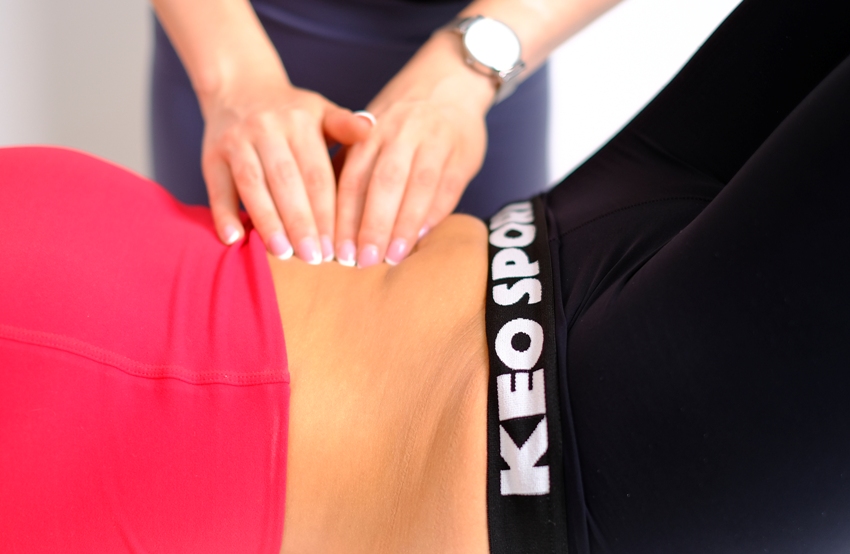When is it recommended to start?
From the 6th week after giving birth, after the 6-week medical examination.

What can happen at postpartum physiotherapy?
- always individualized therapy, which begins with a musculoskeletal and pelvic condition assessment, interpretation of the final hospital report, discussion of the difficulties and possible complications of pregnancy and childbirth, discussion of the events of the postpartum period, and questioning of current complaints
- examination of posture and spinal movements, joint and muscle areas of complaint
- examination of the degree of rectus diastasis and the strength of the abdominal muscles
- in case of need or complaint, manual examination of the strength of the pelvic floor muscles inside the vagina, lying down and standing examination to rule out prolapse complaints – uterine prolapse (descensus uteri), bladder hernia (cystocele) and rectal hernia (rectocele)
- setting goals: which forms of exercise, sports, activities you want to return to. In case of running and other big physical loads, we build up the gradual loading according to a defined, strict, scientific, up-to-date protocol, while placing great emphasis on pelvic floor training
- the trunk muscle strengthening and the pelvic floor muscle training is in the center of physiotherapy
- we learn arch exercises for the health of the plantar muscles and for learning the appropriate load
- scar mobilization to eliminate tissue adhesions, scar treatment
- manual lymphatic massage to improve circulation and reduce edema
- manual therapy techniques for pain in the shoulder girdle, back, waist and hip joints
- kinesio tape for the rectus diastasis
